The Timberwolves Doctrine: Inside look at Minnesota's young core

Get all of Rob Mahoney's columns as soon as they’re published. Download the new Sports Illustrated app (iOS or Android) and personalize your experience by following your favorite teams and SI writers.
In reporting on the development of Andrew Wiggins, I had conversations with Timberwolves players, coaches, and executives on a variety of subjects relating to the team. Below are a collection of those insights that apply to the broader state and future of the franchise beyond Wiggins alone—a characterization of the philosophy that has guided the Wolves this season.
Changing speeds and direction
The passing of Flip Saunders shook the Timberwolves organization in incalculable ways—some of which translated directly to the product on the court. Sam Mitchell has said that he retained Saunders’s base offense and playbook to start the season in part out of ease in a turbulent time. That structure and influence lingered until Minnesota made a conscious effort to ramp up the pace and move on.
“At the All-Star break, I spoke with Glen [Taylor] and Sam [Mitchell] and we decided that we've got to play more uptempo,” Wolves general manager Milt Newton said. “We have to. We can't have guys sitting on the ball…It's really tough to score against a set defense on every possession. Given the type of players that we have—athletic guys that can run the floor and excel in transition—we felt like it was in our best interests to really expound on that and really run the ball and push it up the floor.”
Can't Miss: Andrew Wiggins and the Timberwolves need each other
Minnesota also broke away from its set–heavy format in favor of chasing a more organic flow. The improvisation demanded by such a style can make its execution tricky for younger teams. Quickness and talent, after all, are no substitute for continuity. So the young Wolves try as they can to build a reactive offense from possession to possession, relying on fewer strict sets than they did previously. The increased pace of play (Minnesota is up near the league average in pace since the break) clearly suits the build of the roster. The more adaptive, flowing style is more of a work in progress.
Passing the torch
Minnesota went into its season starting 39–year–old Kevin Garnett and 36–year–old Tayshaun Prince in its frontcourt—a model team officials understood to be temporary. The underlying idea was to show Wiggins and Karl-Anthony Towns first–hand the requirements and focus of winning basketball, grooming them to assume natural leadership roles within the team. The presence and playing time of veterans shouldn’t be seen as some imposition. It was, in this case, an attempt to give two star prospects—one 19 years old at the start of the season and the other 20—a structure to better understand the full extent of their responsibilities.
“KG is still a very vocal leader, but at some point you have to start transitioning that leadership over to your younger guys,” Mitchell said. “Teaching them how to lead. KG, Tayshaun, and Andre Miller, who was here, they were great at first leading and then slowly they started taking a step back, pushing the young guys to be more vocal and say more. You can start to look at how they're playing.”
Mitchell praised Ricky Rubio in particular for his budding leadership, noting that he will often enter the locker room at halftime to find his starting point guard already addressing the flaws in the team’s play. The Wolves are coaching Wiggins, Towns and Zach LaVine to do the same.
“This is their team,” Mitchell said. "[There are] certain responsibilities and a certain accountability that they've gotta hold each other to. So what does that mean for them? They've gotta learn how to communicate with each other.”
Gallery: Rare photos of Kevin Garnett over the years
Rare Photos of Kevin Garnett
Kevin Garnett
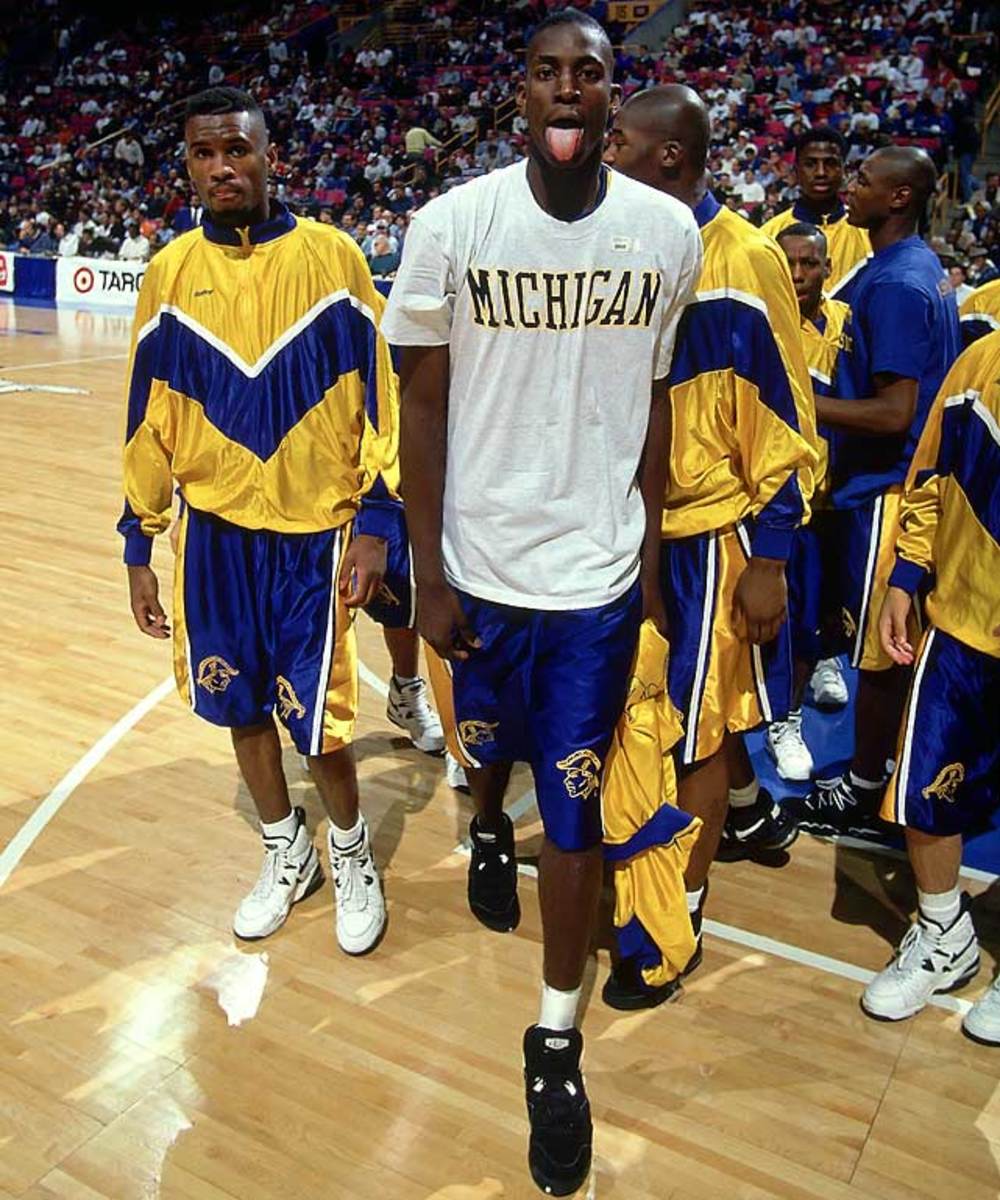
KG starred at Farragut Career Academy in Chicago, where he led the squad to a 28-2 record his senior season and earned National High School Player of the Year honors. Though the T-shirt may indicate he had dreams of playing in Ann Arbor, he instead chose to enter the NBA straight out of high school.
Kevin Garnett

Garnett poses outside of Farragut Career Academy. KG played for Mauldin High in South Carolina for his first three seasons but transferred to Farragut before his senior year.
Kevin Garnett

Garnett was named Mr. Basketball for Illinois after averaging 25 points, 18 rebounds, 7 assists and 7 blocks his senior season at Farragut.
Kevin Garnett and William Nelson
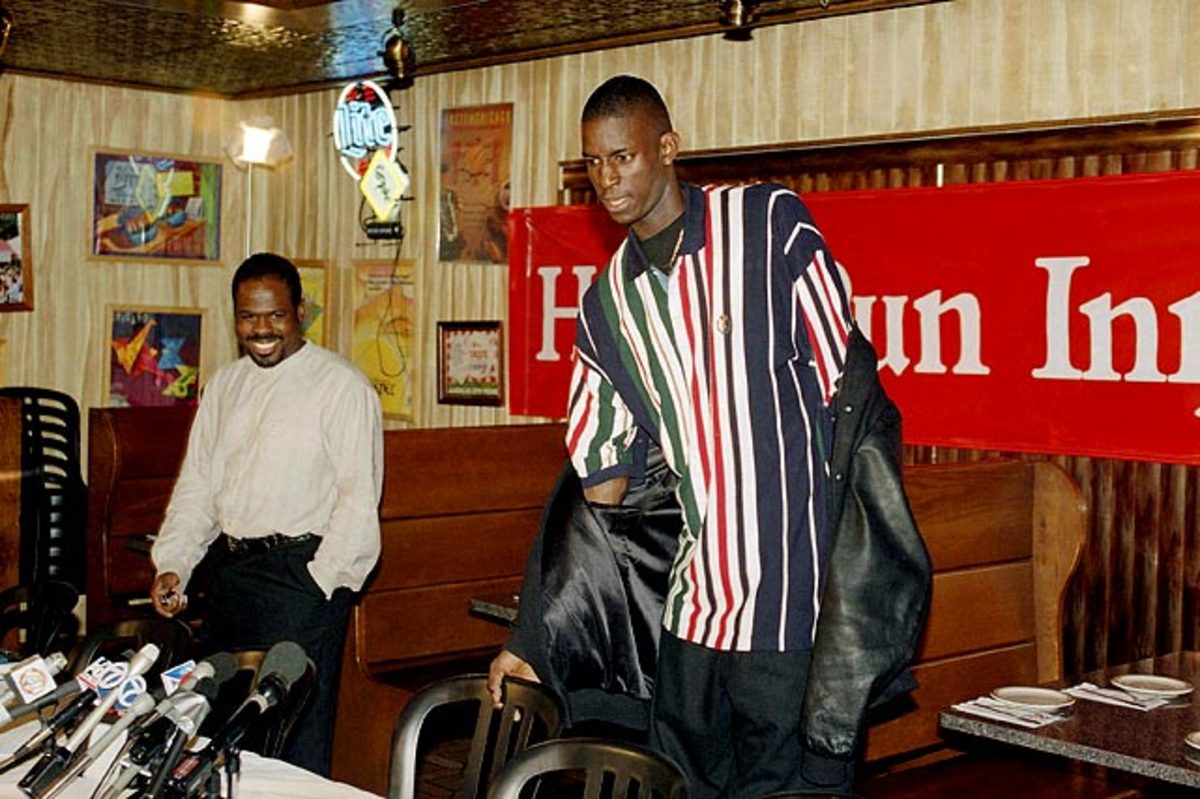
Garnett and his Farragut Academy coach, William Nelson, arrive at a news conference to announce Garnett's intention of skipping college to jump directly to the NBA.
Kevin Garnett

Garnett became only the fourth player to jump directly from high school to the NBA, following Moses Malone, Darryl Dawkins and Bill Willoughby.
Kevin Garnett

Garnett was drafted by the Minnesota Timberwolves with the fifth pick of the 1995 NBA Draft. KG was joined in the Top 5 by Joe Smith, Antonio McDyess, Jerry Stackhouse and Rasheed Wallace.
Stephon Marbury and Kevin Garnett
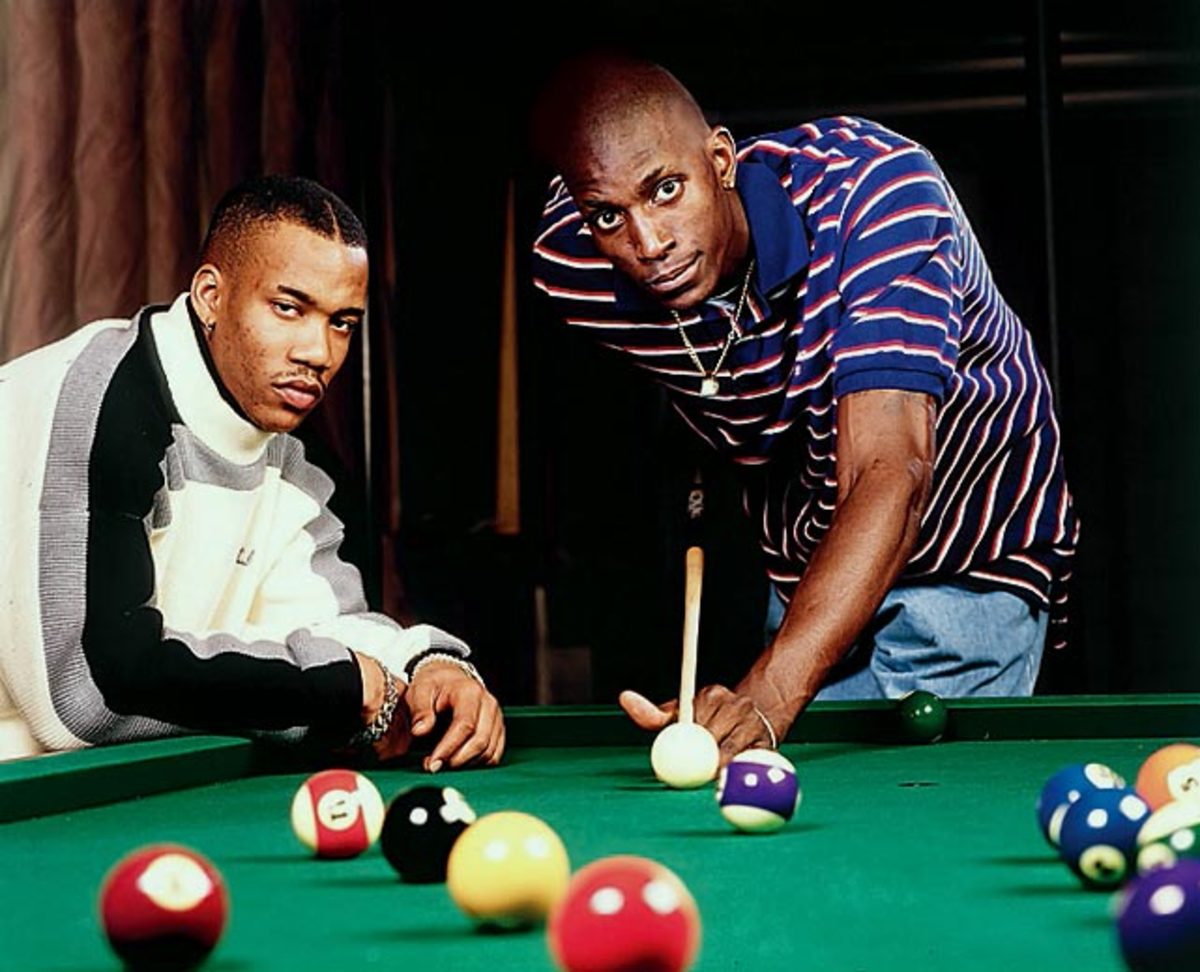
Garnett was joined the next year by Stephon Marbury and the two were expected to be the future of the organization. After leading Minnesota to the playoffs in 1997 and 1998, Marbury was traded to New Jersey after a dispute with management.
Kevin Garnett

Garnett's entourage -- called the OBF (Official Block Family) -- includes friends from Beachwood Drive in his hometown of Mauldin, S.C.
Vince Carter and Kevin Garnett
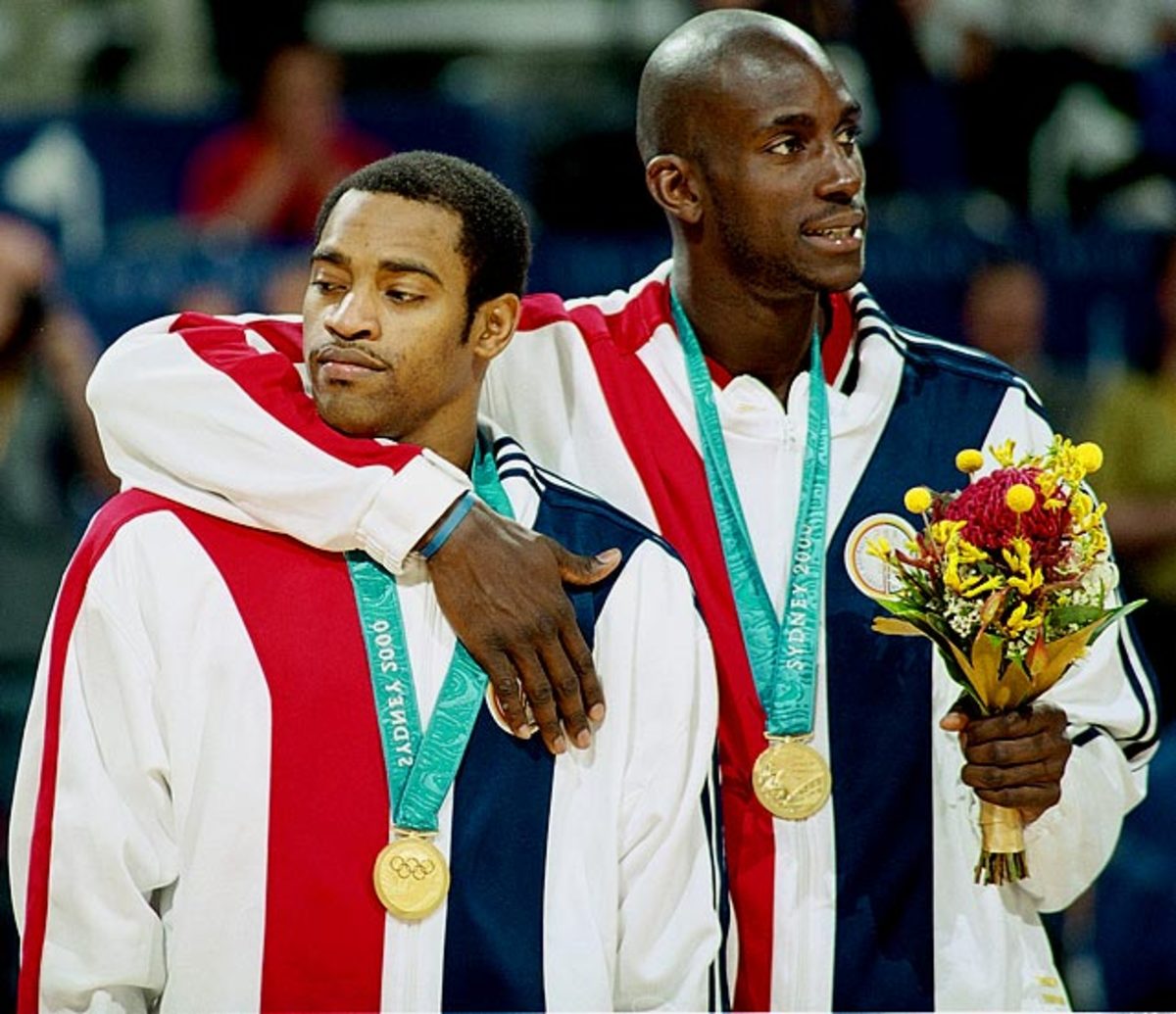
Garnett puts his arm around Vince Carter after leading Team USA to the gold medal in Sydney.
Kevin Garnett and Darius Miles
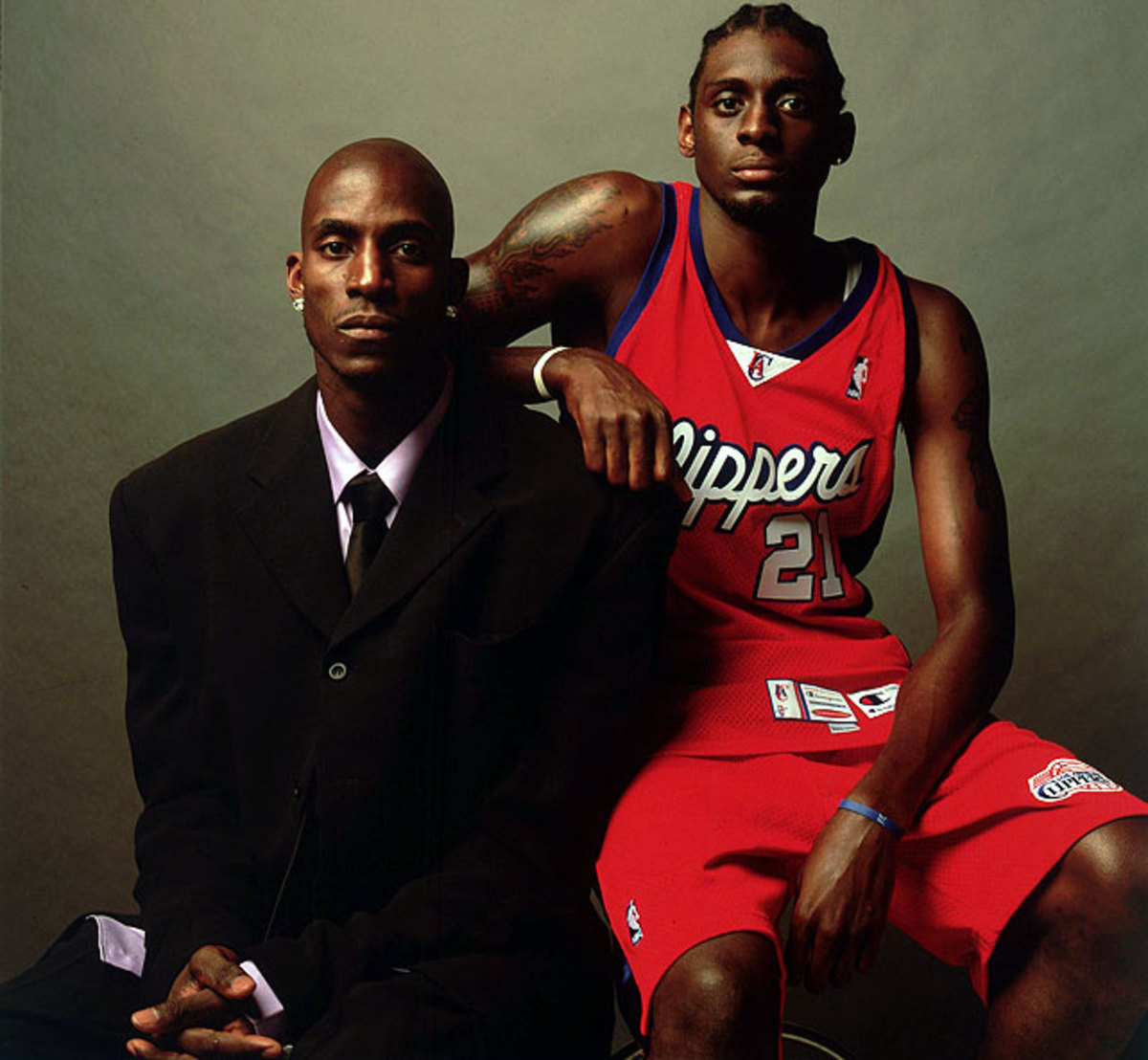
In 2000, high school star Darius Miles skipped college for the NBA and immediately drew comparisons to Garnett for their style of play. Those comparisons proved to be incorrect as Miles played nine injury-plagued seasons and is now out of the league.
Kevin Garnett and Japanese students
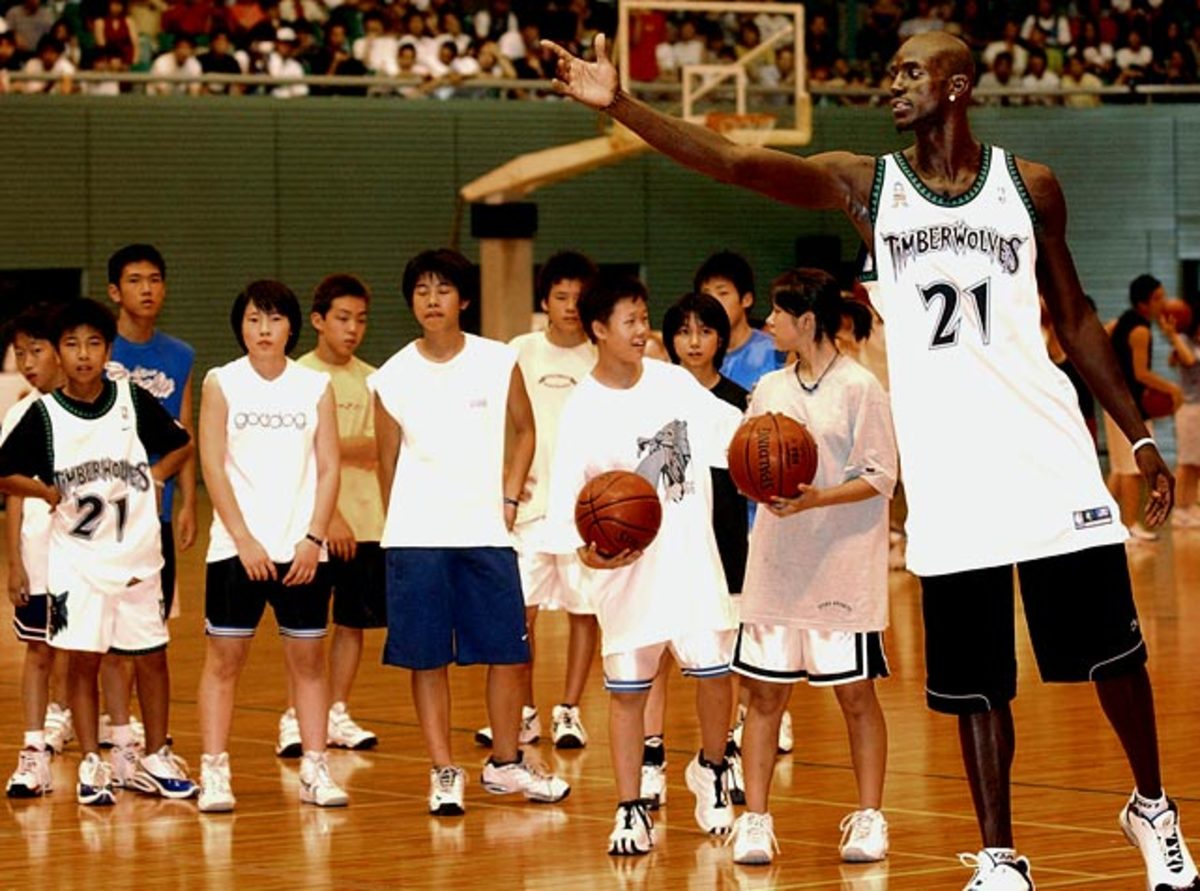
Garnett shows his skills during an NBA clinic in Tokyo.
Latrell Sprewell, Kevin Garnett, and Sam Cassell
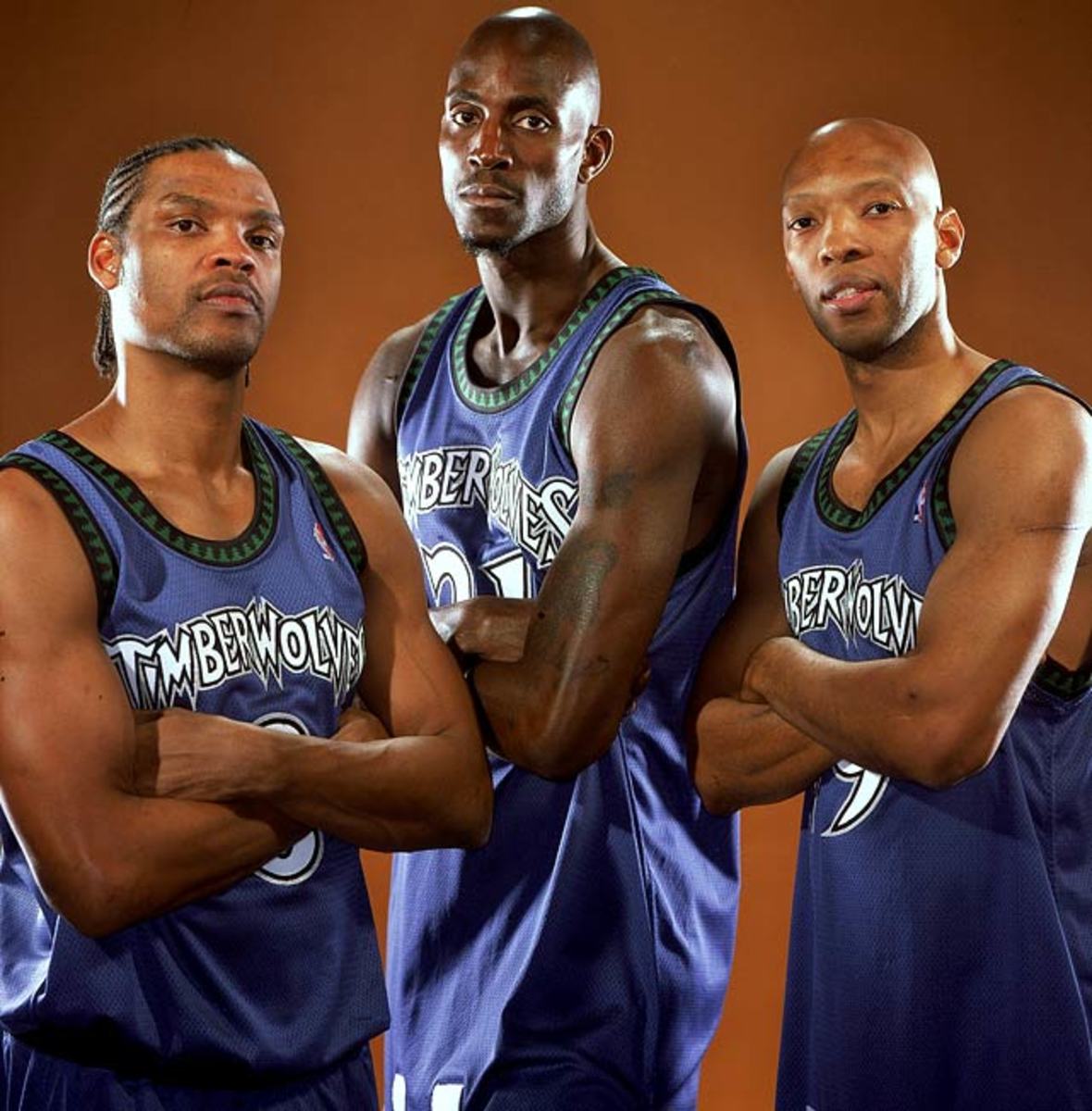
After years of first-round playoff exits, Garnett was joined by Latrell Sprewell and Sam Cassell for the 2003-04 season. KG was named NBA MVP after averaging 21 points, 12 rebounds and 5 assists. The Timberwolves advanced to the Western Conference Finals before bowing out to the Lakers.
Kevin Garnett

Garnett travels to New Delhi to debut his limited edition 'Adidas KG basketball shoe.'
Kevin Garnett and Serena Williams
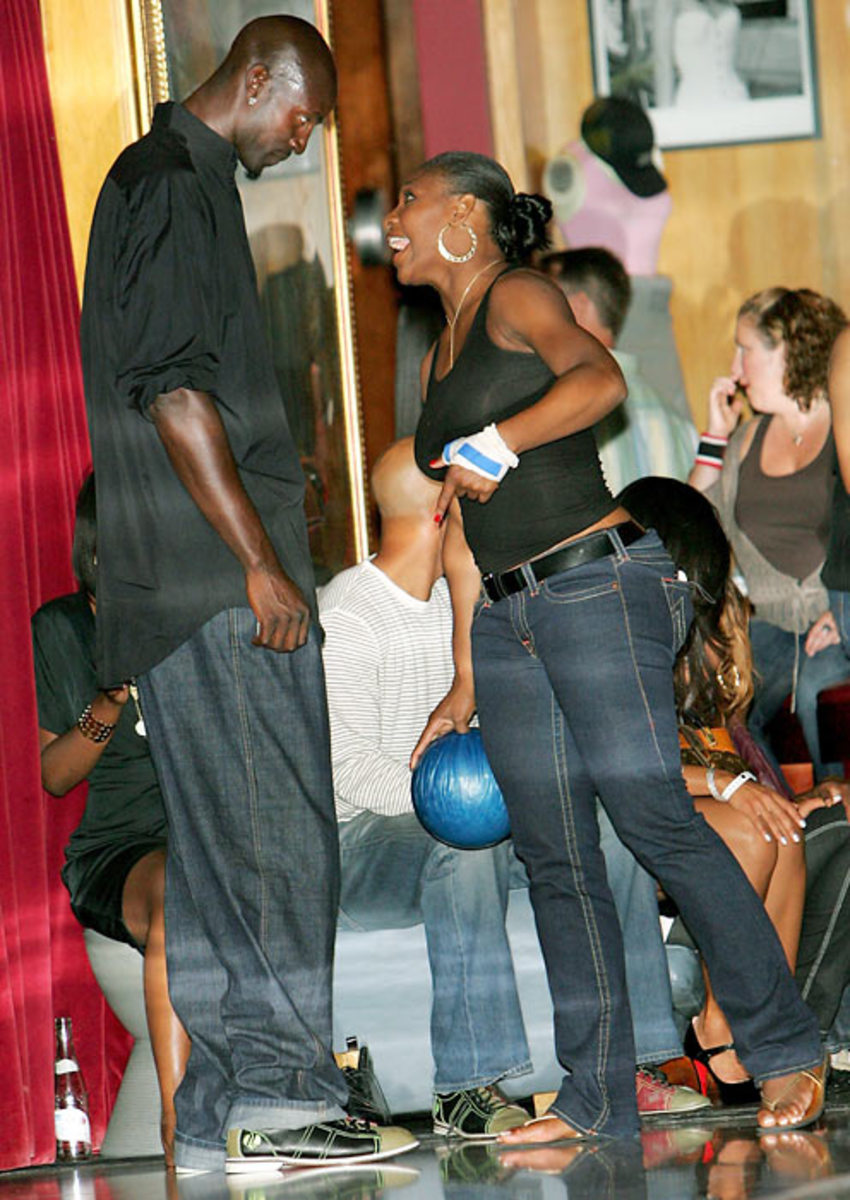
Garnett offers words of encouragement to Serena Williams at the Matt Leinart First Annual Celebrity Bowling Night in Hollywood.
Kevin Garnett and Barry Bonds
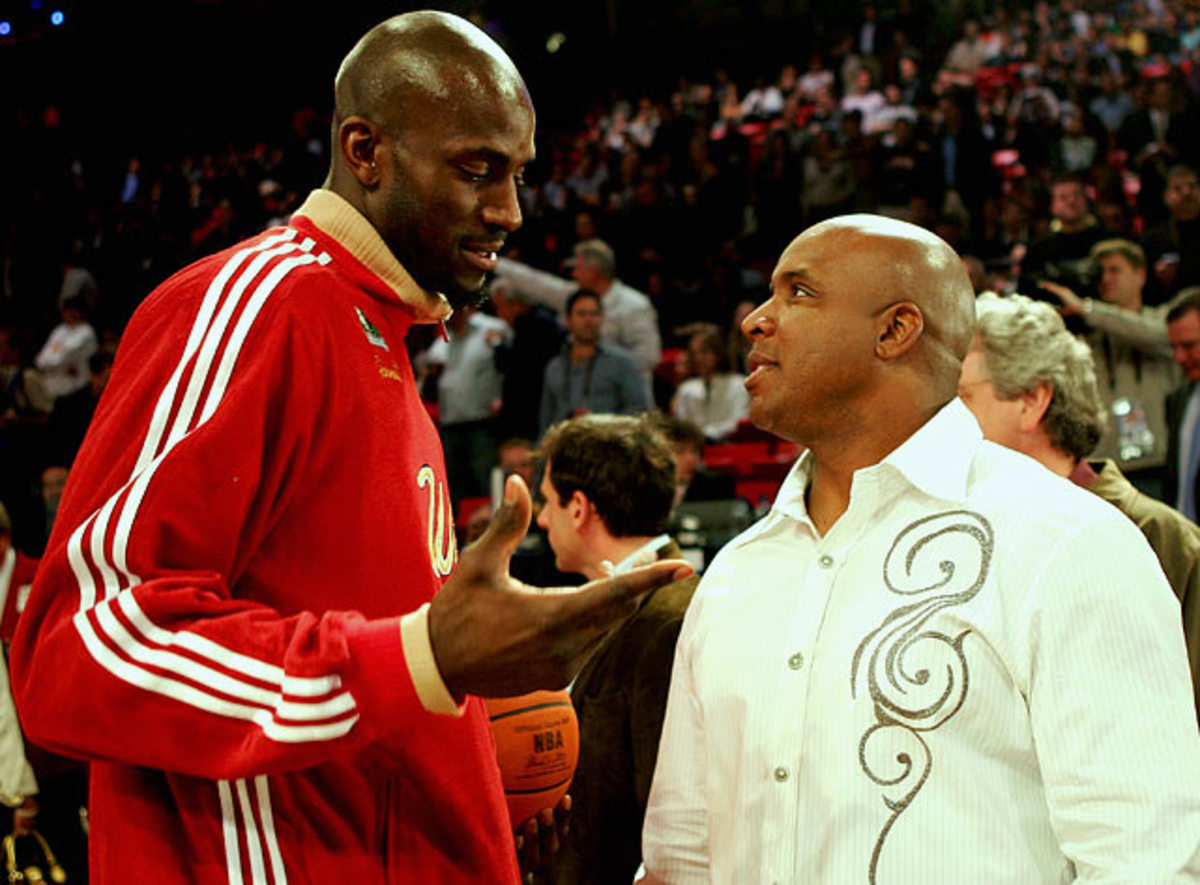
Garnett chats with Barry Bonds before the 2007 All-Star game in Las Vegas.
Kevin Garnett and David Ortiz
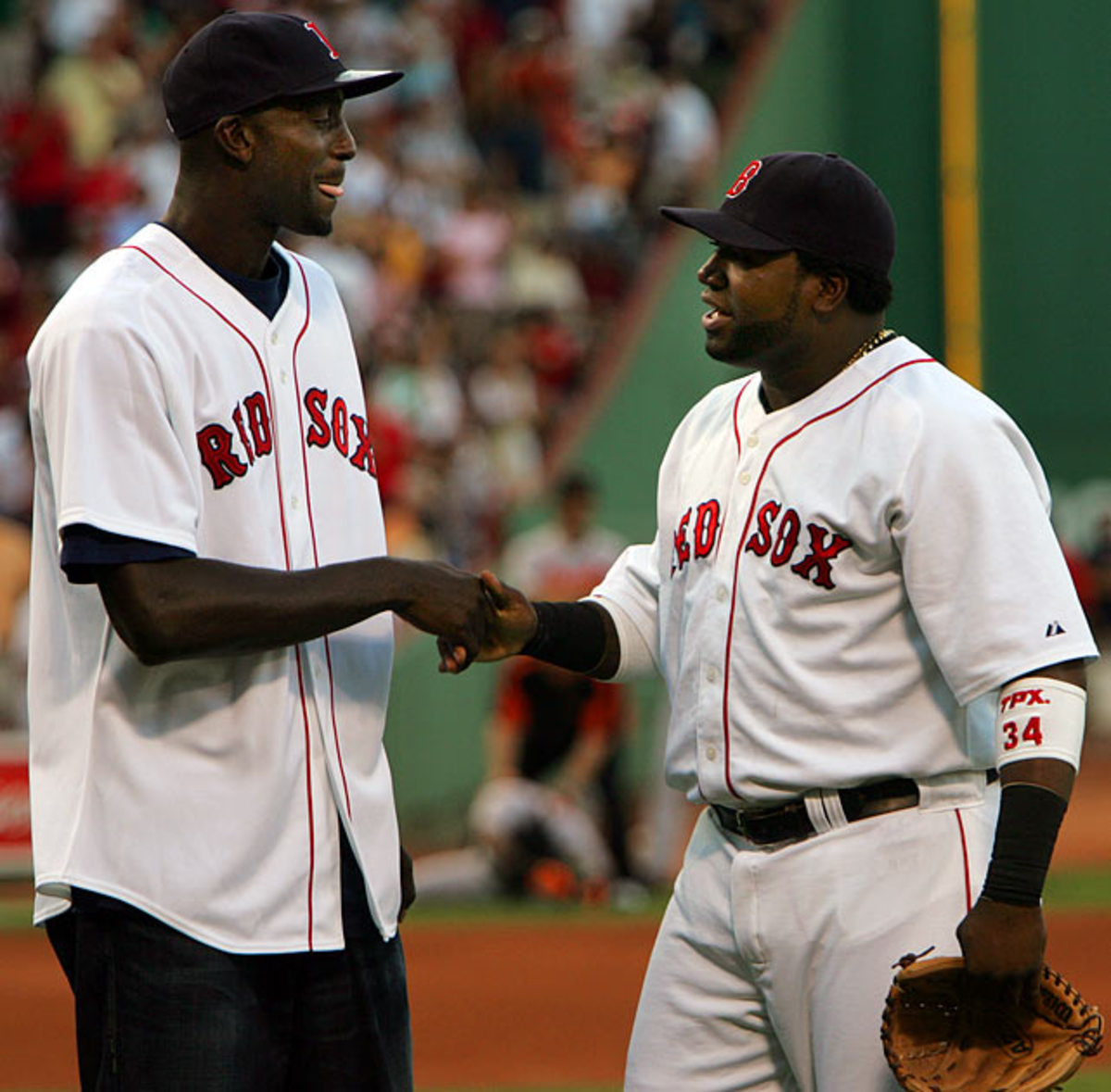
A day after being traded to the Celtics, Kevin Garnett reconnected with his old Minnesota buddy David Ortiz after throwing out the first pitch at Fenway Park.
Ray Allen, Kevin Garnett, and Paul Pierce
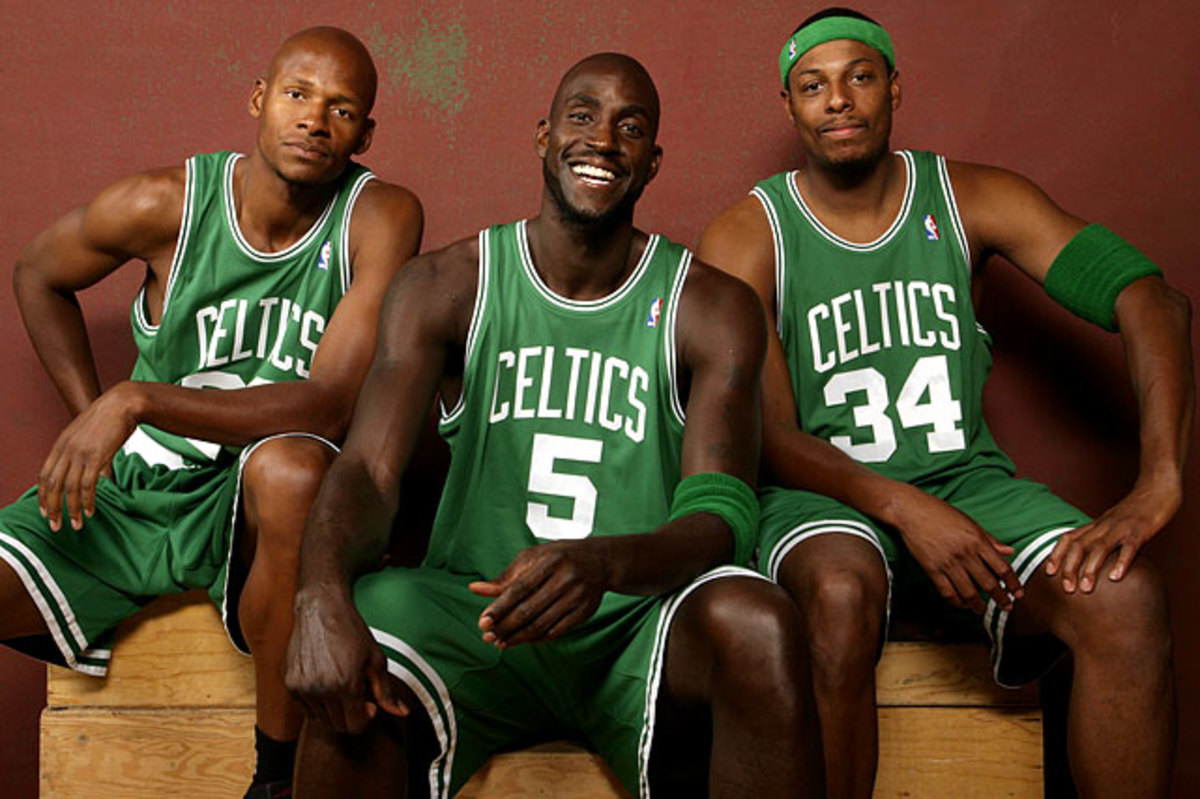
After the trade, Garnett, Ray Allen and Paul Pierce were immediately dubbed "The New Big Three" in Boston and became one of the favorites to win the 2008 NBA title.
Kevin and Brandi Garnett
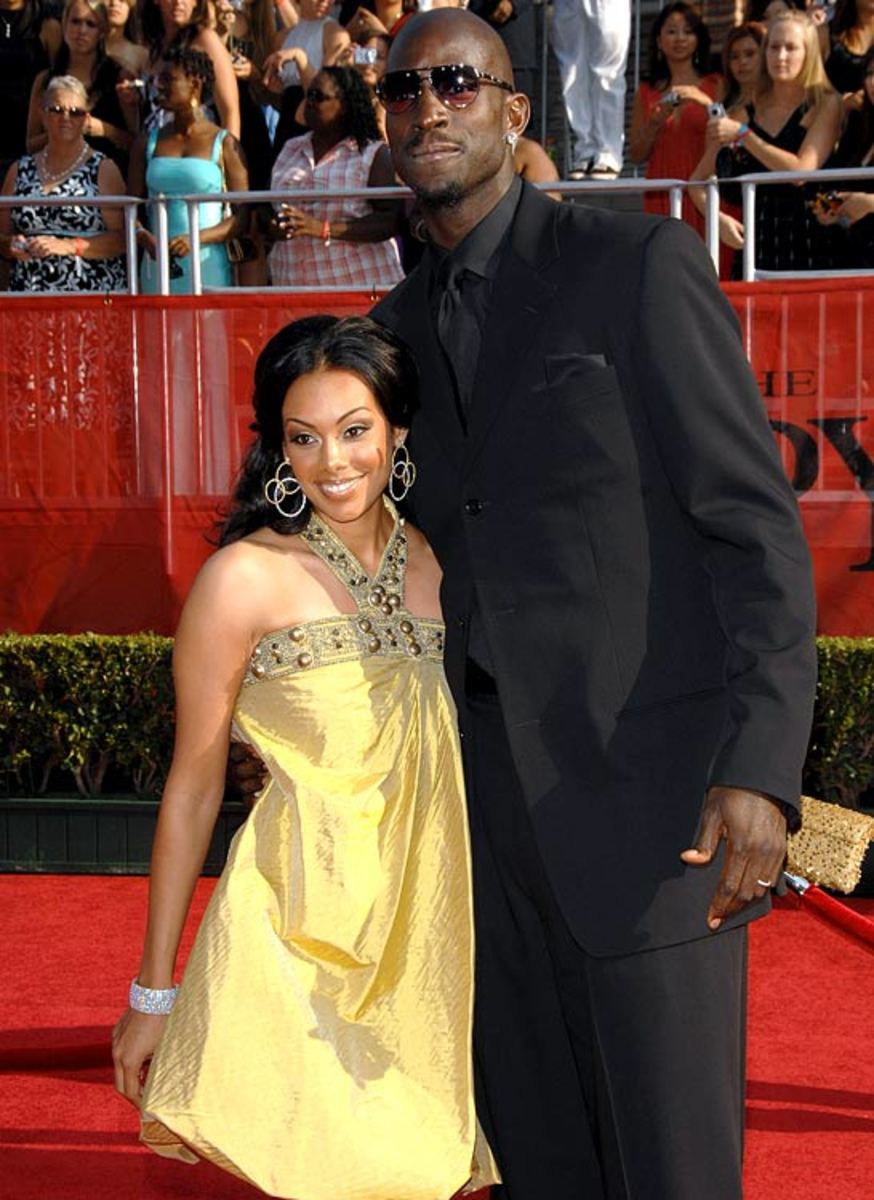
Garnett poses with his wife, Brandi. The couple married in 2004, which forced KG to miss a chance to defend the gold medal in Athens.
Kevin Garnett

A 15-time All-Star, Garnett finally won his first and only championship in 2008 with the Boston Celtics.
Kevin Garnett

Garnett averaged 20.4 points per game and 10.5 rebounds per game during the 2008 playoffs.
George W. Bush and the Celtics
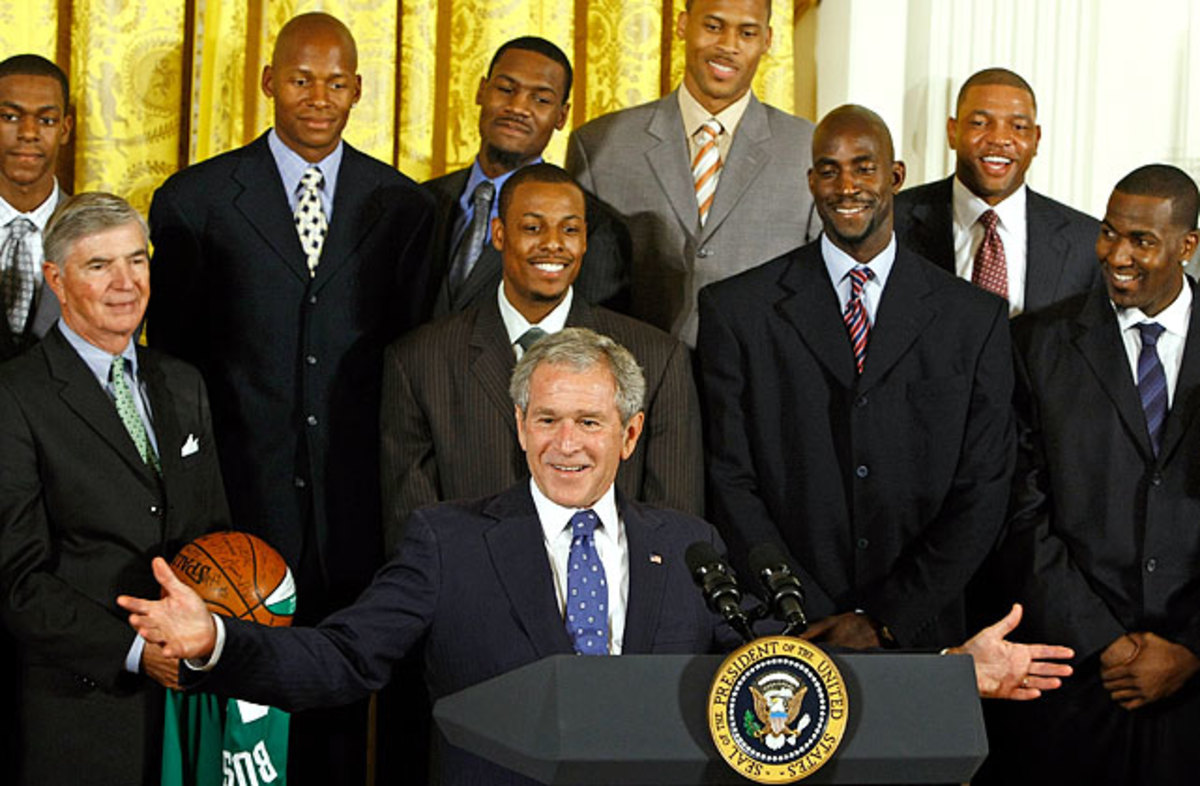
Garnett and his Celtics teammates meet President George W. Bush after winning the NBA Championship.
Peyton Manning and Kevin Garnett
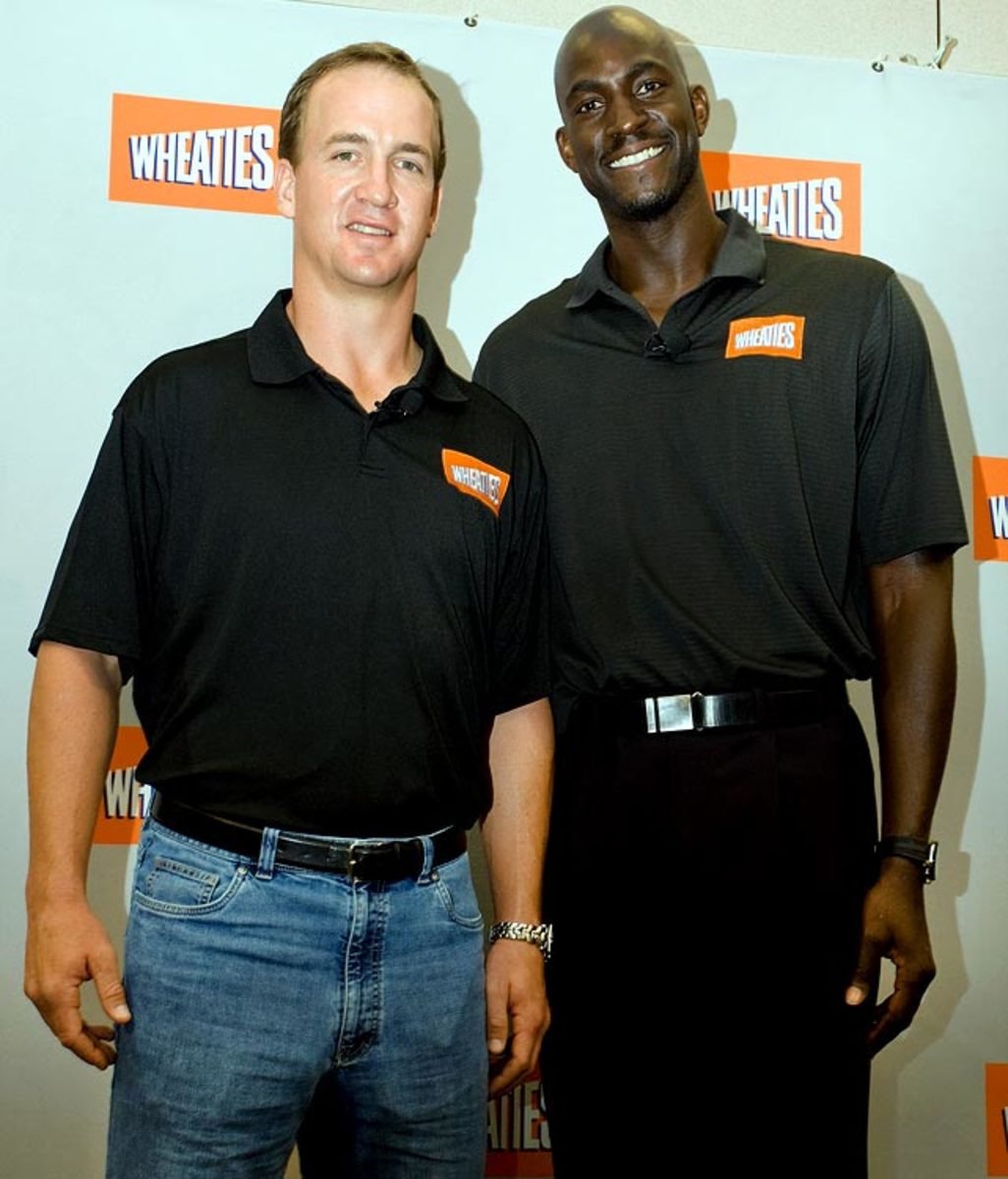
Garnett poses with then-Indianapolis Colts quarterback Peyton Manning during a promotional press conference for Wheaties.
Tim Duncan and Kevin Garnett
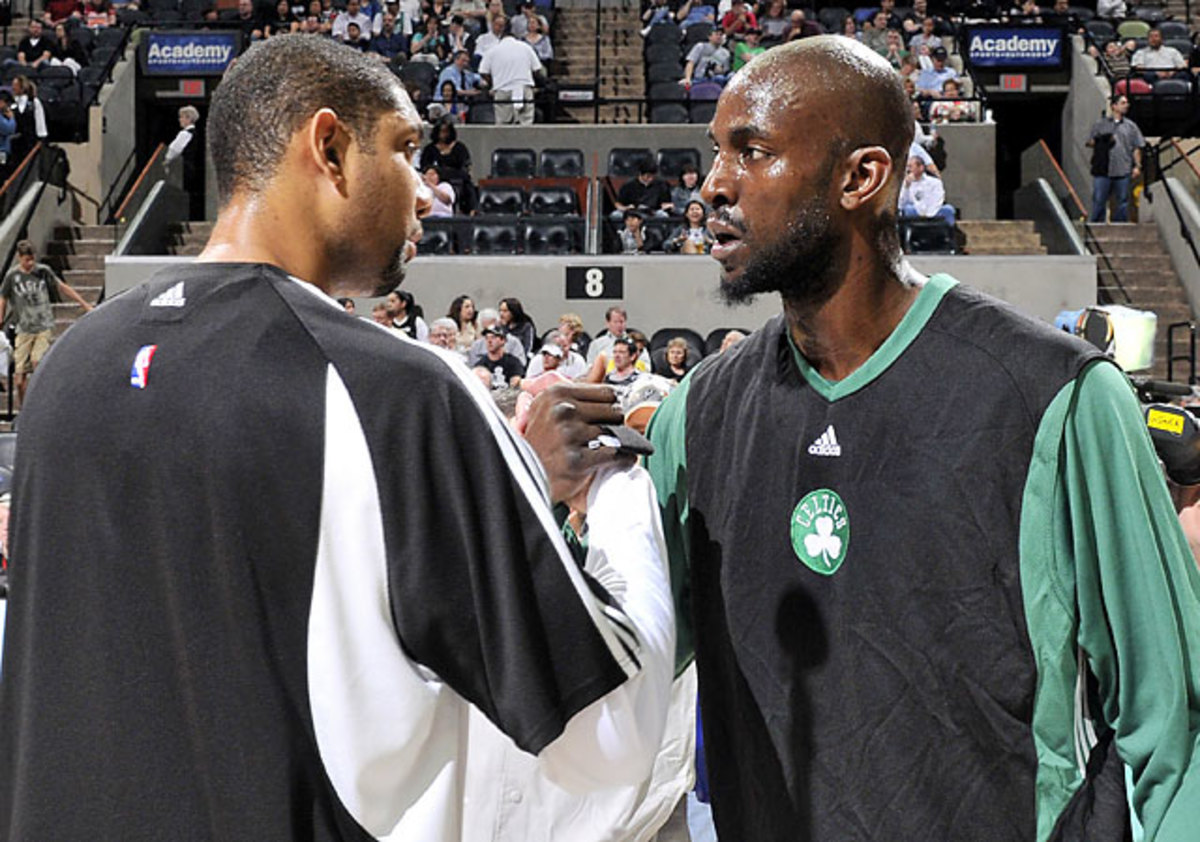
Tim Duncan (left) and Garnett shake hands before a game between the Celtics and Spurs. Garnett and Duncan have dominated the power forward position over the past decade and a half.
Kevin Garnett and LeBron James
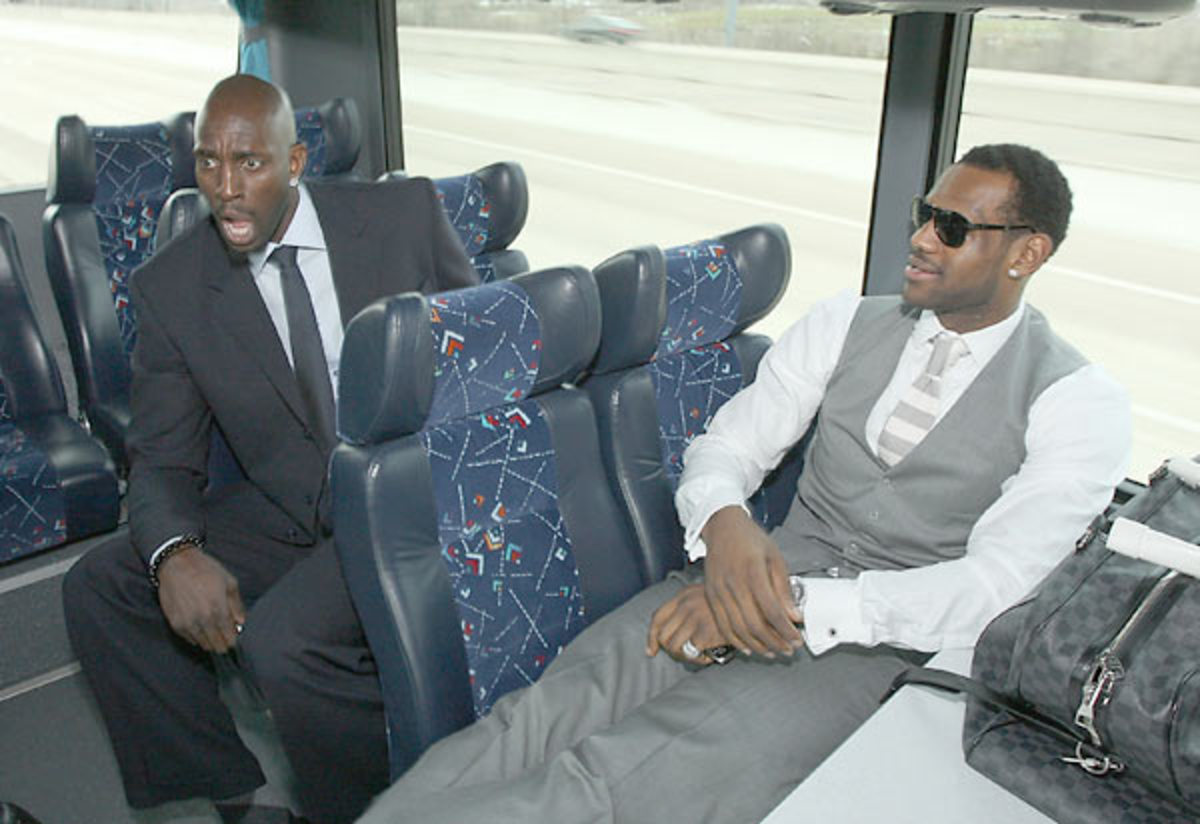
Garnett and LeBron James share a laugh on the bus ride to the stadium prior to the 2010 NBA All-Star game in Dallas.
Kevin Garnett

Garnett poses for a portrait as part of the 2011 NBA All-Star Weekend in Los Angeles.
Kevin Garnett

Garnett battles it out at the first ever Call of Duty XP at the Stages at Playa Vista in Los Angeles.
Kevin and Brandi Garnett

Garnett and his wife, Brandi, attend Day 11 of the 2011 U.S. Open.
Rajon Rondo and Kevin Garnett
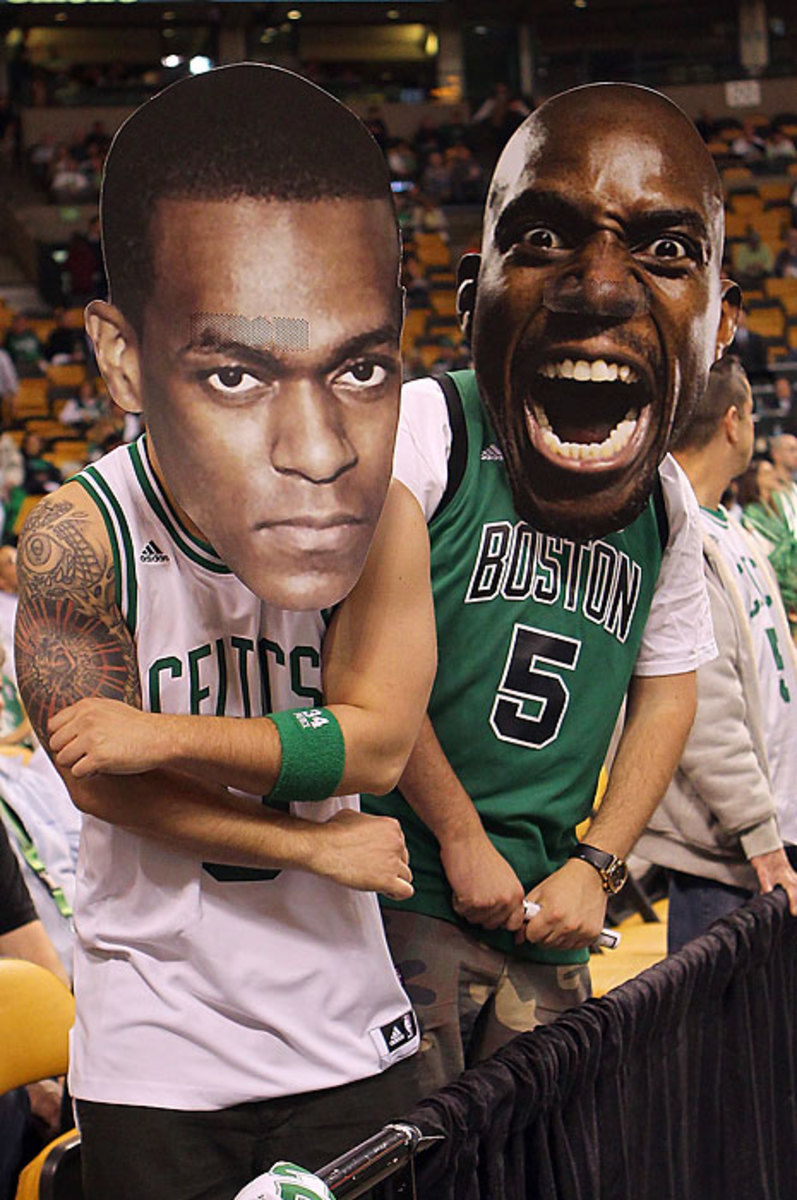
Fans wearing masks of guard Rajon Rondo and Garnett pose before a game with the Atlanta Hawks in Game 3 of the Eastern Conference quarterfinals. Garnett has adopted the city of Boston as his home since his arrival in 2007 and has become a favorite among the Celtics faithful.
Kevin Garnett and Kobe Bryant
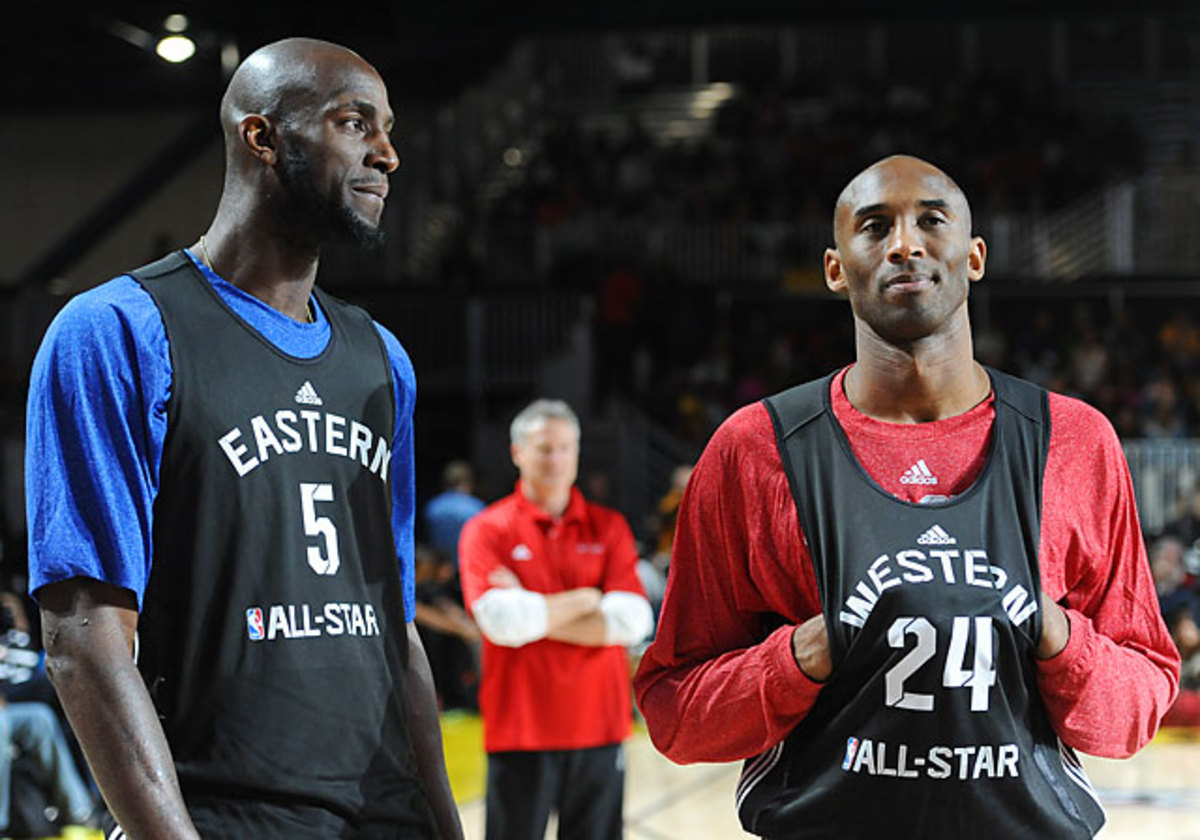
Kobe Bryant (right) and Garnett talk during the NBA All-Star practice in Houston. Garnett made 12 consecutive All-Star appearances from 2000 to 2011.
Building a bench
The play of the starters has been highlighted, in a sense, by the plunge in execution whenever Minnesota dips into its bench. The Wolves players themselves are not blind to this.
“We're missing a few pieces off the bench,” Wiggins conceded.
Yet in the Newton's eyes, the costs of operating with an insufficient bench extend well beyond the actual minutes and play of the reserves. He spoke, specifically, to the value of having the right kinds of players backing up Wiggins and LaVine on the wing.
“Adding the right pieces behind [Wiggins]—whether it's the two or the three—is very important,” Newton said. “A player who will push him in practice. A player who can defend that position when he's out…We've got to continue to put guys on this team that will continue to push not only him, but push the other type of players—the type of players that, if you're not doing your job, you're in a position where you could lose your job. We've got to put players on this team that will bring the competition up in practice and push the other players for their positions, plain and simple. You also want to put the best players out there, but if you don't put your guys in a position where they're on edge and capable of having their minutes lessened because someone is right behind 'em, I think your team can take a dip when your team is put in that position.”
The costs of playing together
The players on successful teams are bonded, in part, by mutual sacrifice. Playing the best basketball possible requires that some scale back their contributions, that others assume uncomfortable responsibilities, and that all remain conscious of the way their individual actions influence the broader ecosystem of the team. A player giving up a certain part of his game can be just as important—if not more so—than another building out his skill set.
This has yet to be a glaring issue in Minnesota, though the Wolves are trying to impress the importance of that dynamic on their young stars before external pressures mount. “As players get older, they have other people on the outside that aren't part of the group in their ears telling them what it's going to take for them to get this and get that,” Newton said. “That's where the problem comes in. Hopefully that noise is something they can block out and be focused on winning, winning big, winning a championship and realizing that they can't do it without each other.”
Clash and overlap are inevitable. With the right priorities, they can also be made inconsequential. Ego, pride, self–interest, and showmanship can all be compartmentalized appropriately with the right buy-in—that essential commitment at the heart of every contender.
“All three of [Towns, Wiggins, and LaVine] are going to have to sacrifice a little bit of their game so they can play well together,” Newton said. “When you don't do that, that's the beginning of trouble. For me, one of the biggest things that I hope for is that we continue to develop them into a group that wants to win so bad that they don't care who the biggest star on team is. That's the one thing that I really hope above all.”
• MORE NBA: Mock Draft 2.0: Ingram claims No. 1 | Roundtable: Thon Maker
Minnesota has already seen some examples of this sacrifice, including Wiggins’s willingness to slide over from the two (where he enjoyed a nightly strength and size advantage) to the three (where he wrestles with bigger, stronger wings) to accommodate LaVine. Mitchell met with Wiggins on the subject and was told he would play wherever necessary to give LaVine an opportunity. That same mentality helps to shape the team's play.
“We're not a selfish team at all,” LaVine said. “If it takes one of us taking 10 shots instead of 15 that game, or 15 instead of 20 shots that game, whoever's hot and whatever's working—that's how we've gotta play it out.”
Threaded through all of this is another reason Wolves officials are optimistic regarding the future of a Towns–Wiggins–LaVine core: The three genuinely seem to enjoy each other’s company. The best players on many teams have working partnerships. These three catch movies, play video games, grab a bite, or cruise the mall whenever they can. “We're always really close,” Towns said. That kind of relationship isn’t essential, though it does make the internal balancing act that all teams must manage a touch easier.
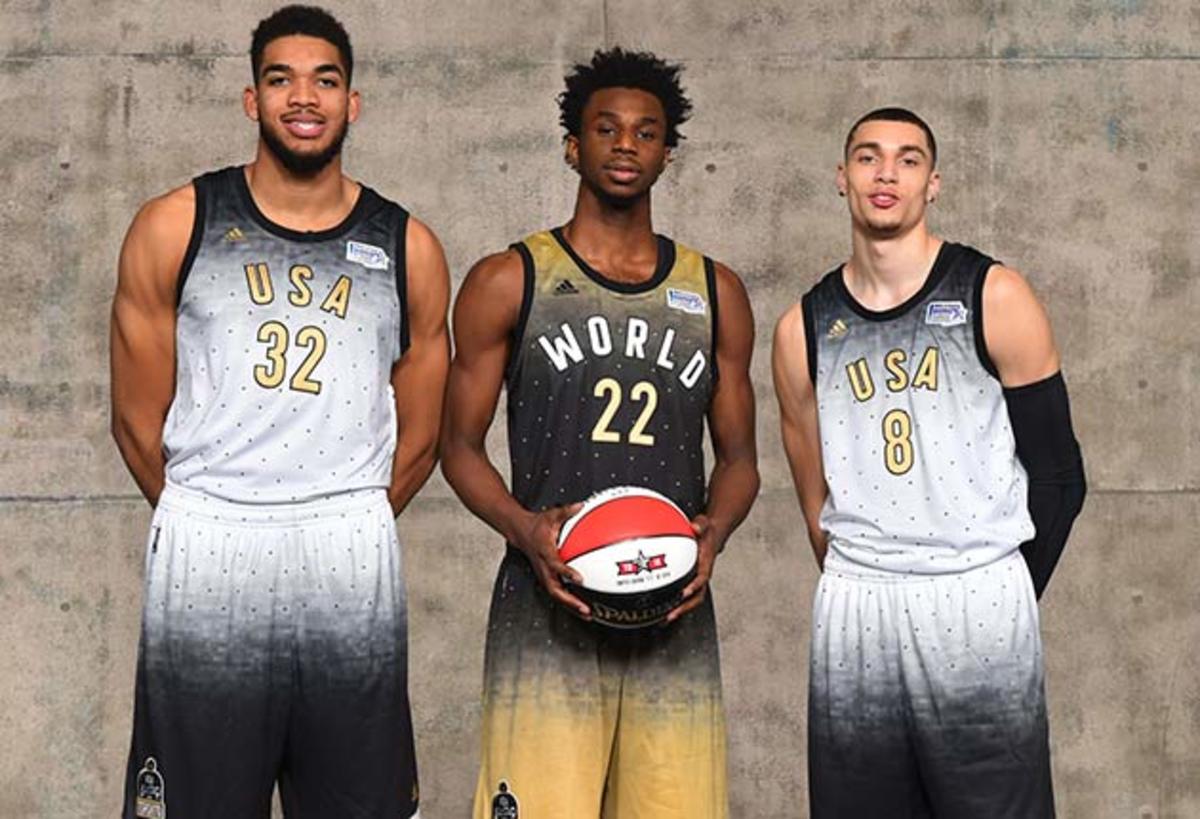
A three-man core
A thought exercise regarding the upstart Wolves: Which current players will still be on the roster when Minnesota next makes the playoffs? How about when it next contends for a title? Towns is a certainty and Wiggins is quite likely to remain. Newton, based on his comments, assumes a third mainstay.
“Doing research of championship teams over the last 10 years, all of those teams have had 2.8 All-Star–type performers. So we're gonna say three guys on their team. If they can play together, their ability to score and do things like that, those championship teams have had those type of players. Right now, we have that in KAT, in Wiggs, and in Zach.”
It’s not often that LaVine, intriguing though he may be, is regarded as a future star. Newton apparently sees him that way—or at the very least wants him to be seen in that way. LaVine has the ability. The question is whether he can sufficiently tune up his defense, refine his decision making, and steady his game to register as that kind of player. Regardless, the tools are compelling—as is the progress that LaVine has already made since coming into the league.
“Zach, he's a beast,” Newton said. “Teams are starting to see it now. But having those two, and Zach, those three, in terms of really talented scorers—it's something that gives us a really good foundation to build on.”
The struggles of youth
It can’t be said enough: The gap in occupational knowledge between young players and veterans is considerable. There’s always something to be said for the dynamism of emerging talent. Though from the perspective of coaches who push their teams toward reliable execution, inexperience can prove painful. Some of the struggles within individual matchups stem from a simple lack of familiarity; NBA rookies and sophomores might know an opponent’s game in broad strokes, though not to the level of fully processing an opponent’s specific tendencies.
“They haven't been around,” Mitchell said. “They haven't seen enough. Think about what Tayshaun has seen. He can give you a breakdown of every guy in the league. How many guys can Zach LaVine give you a breakdown of?”
Outside of those specific matchups, young players often don’t have a feel for the machinations of NBA offenses. The structure of plays and systems changes at every level in accordance with the size and skill of the competition. Part of breaking into the NBA is learning its tactics—and how they can be used against you.
• MORE NBA: Meet the only man who can truly guard Stephen Curry...
"For our young guys, especially [Wiggins], if you put him on the ball on a great player, he's locked in and he knows what he's doing,” Wolves assistant coach David Adelman said. “But on the weak side, when you're playing against teams that run motion basketball where they're cutting, they're moving, they're screening, that type of stuff, they have to learn through film and how they're being manipulated on the weak side…You have to see it yourself to understand how important you are when you're the farthest away from the ball.”
Newton also noted the need for a particular kind of basketball maturation: The ability for young players to attack familiar opponents without compromise.
“[We're] trying to get all of our players to understand that when seven o'clock rolls around, you have no friends but those 14 other guys on your team,” Newton said. “That guy that you played with in the summertime, for that time being, he's not your friend. So go at him…The players of today that really grew up in that AAU mentality, that's one of the things that—not just some of our guys, but guys on the other teams—that's a block, that's a mental block that they have to hurdle.”
Reading the game for its context
Still at issue for the Wolves is the kind of awareness that allows players to see a situation’s full context. “Knowing the game is not just playing,” Rubio said. “It's knowing when to score, what the situation is, and when to demand the ball.”
The grasp of each of Minnesota’s developing players seems to vary on a nightly basis. Most—and certainly all three of Towns, Wiggins, and LaVine—have it in them to play to their circumstances. Yet many of the Wolves’ errors are still brought about by a players losing sight of a game’s comprehensive shape. There are pressures for each to make the best individual play, to satisfy the instruction of their coaches, to exploit an opponent’s specific weakness, and to do what is best at each moment within a game. When those directions come into conflict, the inexperienced can sometimes veer off-course.
“If a team goes on a 6-0 run, do you pull up and shoot a jump shot with 18 seconds on the shot clock or do you attack and find a teammate and facilitate to keep the rhythm of the game going?” Adelman asked. “I think stuff like that for young guys is hard. They've grown up scoring and it's come easy, for all our guys. They have to understand at this level, moving the ball and sharing the ball is sometimes more important.”
Rubio’s orchestration
A distressing number of outside observers seem oblivious to the value of Rubio—as a playmaker, as a defender, and as an established player with a nuanced understanding of the game. Rubio has clear deficits in terms of skill set, but he has a great feel for the inner workings of an offense and the means of creating open shots. Sharing that perspective with the younger players on the team is part of the job.
“I was telling Wiggs at the beginning of the year that he was working too much to score when he's so good that it could be so much easier,” Rubio said. “He doesn't have to force things. I was telling him a couple situations like floppy action, where he screens Zach [and] then if he waits for a second, he's wide open under the basket. That's two points that you don't need to do much [to get] – just set a good screen for Zach because your man's gotta help. Something like that—little details that I'm trying to help them to see. As a point guard, I can do some of the thinking for them. They just have to finish the play.”
• MORE NBA: The Fundamentals: A glimpse of what Ricky Rubio could be
Filter and overload
Among the core concerns in coaching a developing team is the matter of how much to teach. Players can realistically only absorb so much. Plus, those overloaded with tons of new information all at once may become bogged down in minutia rather than develop a firm grasp of important concepts. Mitchell and his staff have wrestled with that dynamic, though ultimately he errs toward giving his players the principles and lessons they’ll need and letting them retain what they can.
“We struggle with that,” Mitchell said of deciding how much information to lay on players. “But I just made up my mind and said, 'If they're in this league, you've gotta give it to 'em.’ They may not get it all. They [won’t]. But no players ever get it all.”
Top-down coaching
If you’ve ever wondered why Mitchell seems to come down hardest on Minnesota’s most prized young players, Mike Krzyzewski may be to blame.
“Coach K said it best and I live by this: You have to coach your best players as much as you coach your other players," Mitchell said. "By coaching your best players, you're coaching the rest of the team. If I coach Andrew, I can coach anybody. If I coach Karl, I'm coaching everybody. When I was in Toronto, I probably pushed Chris [Bosh] harder than I pushed anybody. Why? Because they could do more…I tell them: Because y'all are taking all the shots, getting all the minutes, I'm gonna be on y'all’s butt more. Because y'all are expected to do more. Because you're playing 35 minutes a game, the expectations on you are to do more, to give more.”
Mitchell also spoke to the team-wide influence of this kind of coaching. The 15th player on the roster will usually take heed when Towns or Wiggins gets a harsh correction, as to make sure they don’t make the same mistake. But how much attention will one of the Wolves’ young stars honestly pay to the errors (and instruction) of a benchwarmer?
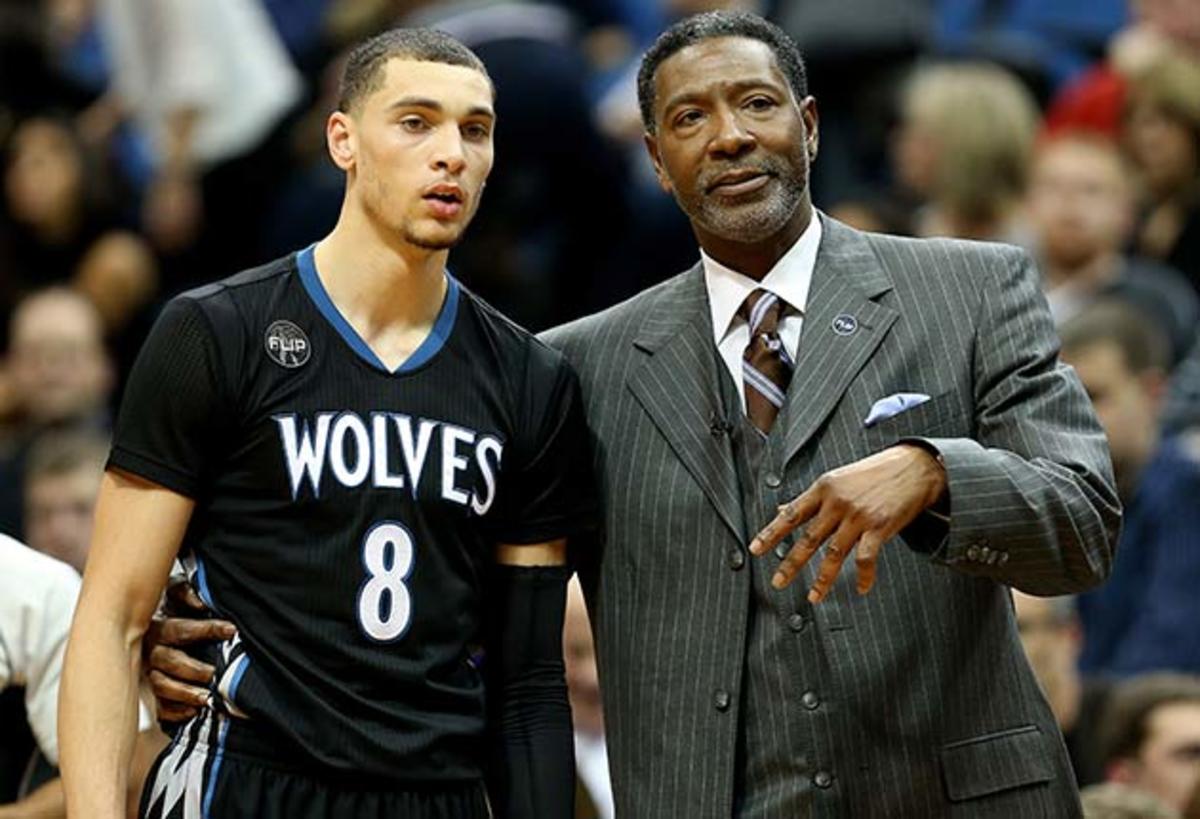
Sam Mitchell’s future
The decision of who will coach the Wolves next season ultimately sits with owner Glen Taylor. Newton, however, figures to have some input in that evaluation—even if he, himself, is only secure in his job with the Wolves through the off–season. Take what you will from his evaluation of the work Mitchell has done as the team’s interim head coach this season:
“I think he's done a good job given the circumstance that we brought him into,” Newton said. “Sam has a different style in regards to communication with players. [The] players have adapted to that. Flip was totally different in that regard. The players have adapted to that style. [Pause] More importantly, we brought on board Tayshaun Prince, Andre, brought K.G. back—players that have won championships, played at a high level, and personified the mentality that you have to have to be successful in this league. How to prepare for practice. How to prepare for games not just physically but mentally. That was a very important thing that we did in the off–season because a lot of times young players, they listen more to teammates that are on the floor, teammates that have been there, done that. Having those vets share that experience with the young players has been very, very important.”
When asked whether he expects Mitchell to return as the Wolves head coach next season, Newton defaulted to the company line. “I’m just gonna go with what our owner said," Newton said. "At the end of the year, he'll sit down and he'll evaluate everything and he'll make decisions based on that."

Open Floor: SI's NBA podcast
Sports Illustrated Podcast Network



The next coach of the Timberwolves
Should Mitchell not be asked to return, his regard for his successor has already been baked into his approach with the team this season.
“One day when I leave here and the next guy comes through the door and sits in this chair," Mitchell said, "I want him to be able to say that the guy who coached this team before taught them how to be pros, taught them how to work, taught them how to play hard, taught them how to play together, taught them how important it is to put your work in every day. I don't want another coach coming in here and saying, 'Well, s---, they didn't learn nothing.' You know what I mean? That's a direct reflection of me and my coaching staff if a coach comes in and feels that way. I don't want that.”
Taking ownership of the process
A recurring concept that bled through in conversations with members of the Timberwolves at all levels: Players taking ownership of their development. “It's about you,” Mitchell said. “It's not about us. It's about the work that you put in. We're just here as a tool to help you get better. It all starts with you and ends with you.” The team, its coaches, and its resources are ultimately seen as a vehicle. Only players themselves can provide the fuel.
“You can't want it more for a player than they want it for themselves,” Newton said. “At the end of the day, I always believe that maybe we may have to grab them and hold their hands and bring 'em out there initially. But sooner or later they have to see that if I want to play at a certain level or if I want our team to get to our certain level, it's gonna be on me to improve and get better. I think we're developing the culture that you have to get better individually and a lot of that happens in the summertime.”
